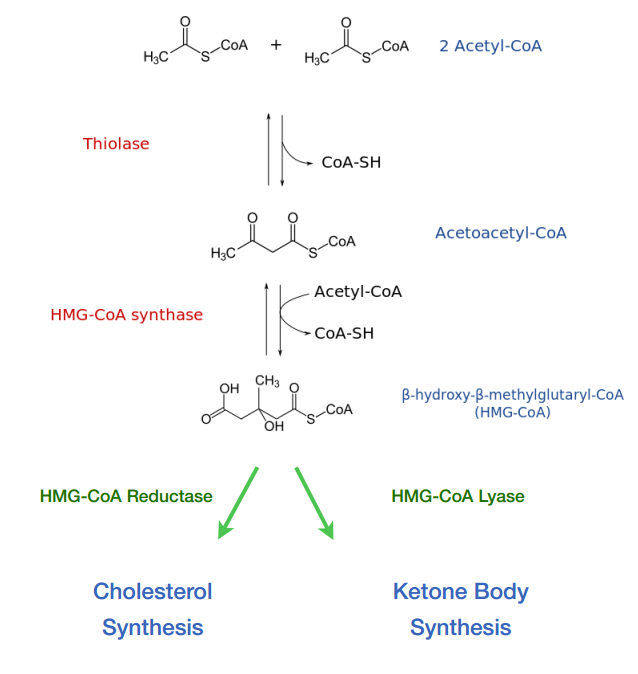6.7: Metabolismo de acetil-CoA
- Page ID
- 53821
El acetil-CoA es uno de los metabolitos más “conectados” en la bioquímica, apareciendo en la oxidación/reducción de ácidos grasos, la oxidación del piruvato, el ciclo del ácido cítrico, el anabolismo/catabolismo de aminoácidos, el metabolismo del cuerpo cetónico, la síntesis de esteroides/ácidos biliares y (por extensión del metabolismo de los ácidos grasos) la prostaglandina síntesis. La mayoría de estas vías se tratarán por separado. Aquí cubriremos los tres últimos.

Las vías para la síntesis de cuerpos cetónicos y la biosíntesis de colesterol se superponen al principio. Cada uno de estos comienza combinando dos acetil-CoA juntos para hacer acetoacetil-CoA. No casualmente, ese es el último producto de oxidación de ácidos grasos con números pares de carbonos. De hecho, la enzima que cataliza la unión es la misma que la que cataliza su rotura en la oxidación de ácidos grasos —la tiolasa—. Así, estas vías comienzan por revertir el último paso de la última ronda de oxidación de ácidos grasos. Ambas vías también incluyen la adición de dos carbonos más de un tercer acetil-CoA para formar hidroxi-metil-glutaril-CoA, o HMG-CoA, como se conoce más comúnmente. Es en este punto que los dos caminos divergen.


